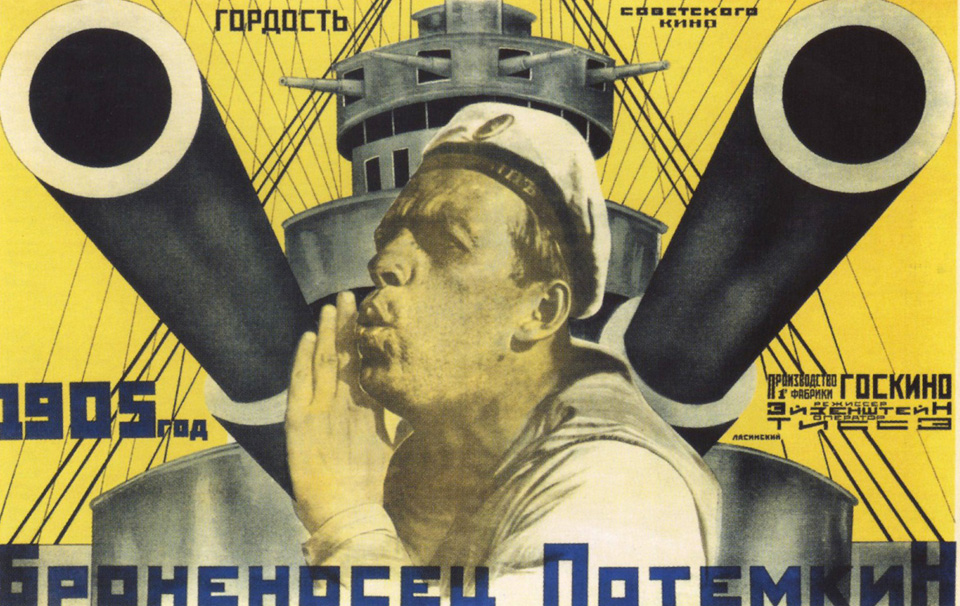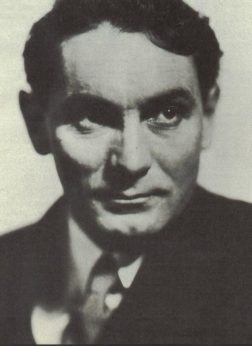
LOS ANGELES — The Los Angeles Workers Center is co-presenting a monthly film series beginning February 24th through November 2017 to commemorate and celebrate the centennial of the February and October 1917 Revolutions in Russia, as well as Russia’s 1905 mass uprising. All these are classics of Soviet cinema. For 10 months 10 films will be shown, on the fourth Friday of each month, with the exception of the last screening. The grand finale will take place on Tues., Nov. 7, which is, owing to calendar changes, the exact 100th anniversary of the date of the storming of the Winter Palace by the workers of Petrograd.
Soviet filmmakers of the 1920s and early 1930s arguably produced the greatest cinematic political films ever. Indeed, as a cinematic trend these Red Russian reels are among moviedom’s leading movements. The fiction and nonfiction motion pictures screened in “Ten Films That Shook the World: A Cinematic Centennial Celebration of the Russian Revolution” are among the finest works of art ever created.
In the words of film historian Ed Rampell, “These motion pictures starkly depict the barbaric cruelty and repression of the czarist state. But more important, infused with the enthusiasm of the success of the world’s first workers’ state, early Soviet cinema has a triumphant vision, showing that when ordinary people unite to do extraordinary things, they become an invincible force. Unlike the lone, rugged individualist protagonists in La La Land flicks, Soviet revolutionary films focus on a mass hero. Everyday workers and farmers are the lead characters, as individuals and as integral parts of the collective, as these fearless proletarians and peasants heroically make their own history, where the people can do anything. Confronting and often overcoming great odds and adversity, humanity and solidarity are the essence of these artworks. Soviet cinema portrays participatory, popular direct democracy of the masses, by the masses and for the masses.
“Early Soviet films show what can happen when the political avant-garde, in control of state resources, subsidizes and works with the artistic avant-garde to advance shared egalitarian, progressive ideas. These stirring movies utilize poetic imagery, lyrical metaphors, creative editing (‘montage’) and more to passionately, intellectually tell the people’s story. In doing so, filmmakers use the dialectical method to construct and communicate socialist philosophy — often in a highly dramatic way, combining education, enlightenment and entertainment. Early Soviet screen agitprop is revolutionary in both form and content, expressing the Russian Revolution’s shining ideals and aspirations: ‘Bread, Peace, Land,’ ‘Workers of the world, unite!’ and more.”
At each screening a speaker will set the stage, briefly introducing the film and filmmaker. After every movie the speaker will make brief additional, relevant remarks and then the floor will open up for a Q&A, followed with light refreshments, where filmgoers can socialize and continue informal discussions. The screenings of these black and white, non-talking films with English subtitles, some with musical soundtracks, are under imperfect conditions — although for many this will be an opportunity to see these films projected on a big screen or not at all.
Admission is free of charge, although donations and potluck contributions to the refreshment table will be accepted. Nobody will be turned away due to inability to donate. All screenings start at 7:00 pm on the fourth Friday of each month, with the exception of the final film.
At the first screening, on Fri., Feb. 24, for the first time in the 10-year history of The Progie Awards, the winners of the Best Progressive Film and Filmmaker honors will be announced live and in public by voters of the James Agee Cinema Circle, an international group of leftwing film critics, scholars and historians.
Come see why Lenin said: “For us, the cinema is the most important of the arts.”
The projected schedule is:
February 24: The Progie Award winners are announced. To honor 1917’s February Revolution, the scenes in the beginning of Sergei Eisenstein’s 1927 masterpiece, OCTOBER/TEN DAYS THAT SHOOK the WORLD, depicting the overthrow of the Czar, will be screened. This will be followed by: Mother, Vsevolod Pudovkin’s 1926 film, inspired by Maxim Gorky’s novel about the 1905 Revolution, about the revolutionary awakening of a middle-aged working class woman, whose son, a trade unionist, is imprisoned.
March 24: BATTLESHIP POTEMKIN. Based on a true story, Sergei Eisenstein’s 1925 stirring account of the mutiny by sailors who refuse to eat maggot-infested meat and the mass strike by workers supporting them during the 1905 Revolution is widely considered to be Soviet cinema’s greatest masterpiece. The terrifying Odessa Steps scene encapsulates czarist brutality, while Potemkin’s theme of triumphant solidarity expressed the essence of Russia’s three revolutions.
April 28: THE FALL of THE ROMANOV DYNASTY. Editing together archival footage, Esther Shub chronicles the doomed czarist dynasty from 1913 until 1917 in this 1927 nonfiction work commissioned to celebrate the 10th anniversary of the October Revolution. Czar Nicholas II, Czarina Alexandra, Aleksandr Kerensky and V.I. Lenin are shown.
May 26: STRIKE. Sergei Eisenstein’s powerful first full-length film depicts a 1903 strike by Russian workers. This 1925 silent film is famous for its imaginative intercutting at the end that expresses the brutality and cruelty of the vicious czarist regime.
June 23: ARSENAL. Alexander Dovzhenko’s 1929 film takes place during the Russian Civil War, depicting the 1918 Kiev Arsenal January Uprising to support the Red Army. A decade before Superman, Dovzhenko bestows a mythic dimension on the rebels, with the indestructible hero proclaiming what could be the Revolution’s motto: “There is something here you cannot kill.”
July 28: STORM OVER ASIA. Pudovkin’s 1928 anti-imperialist parable is set in Mongolia in 1918, as the indigenous people, led by a descendent of Genghis Khan, rise up against the British colonizers and occupiers. (The British were not actually in Mongolia, but in Tibet and Siberia.) It’s like a Soviet version of a cowboys and Indians movie — except, with a little help from Mother Nature, the Natives are unbeatable.
August 25: EARTH. Dovzhenko’s 1930 ode to Ukraine includes rhapsodic images of peasants, sunflowers, tractors and more, as collectivization and modernization come to the countryside, and farmers fight the kulaks and landowners. Earth is sheer motion picture poetry.
Sept. 22: Special treat: Pudovkin’s 1925 short, the comedy CHESS FEVER. Yes, the Bolsheviks had a sense of humor! Followed by MAN WITH THE MOVIE CAMERA, Dziga Vertov’s astounding avant-garde 1929 documentary, as visually inventive as the features by Hollywood’s Buster Keaton or the German Expressionists, full of wild special effects and optical trickery, an exploration of the then-contemporary Soviet Union.
Oct. 27: THE END OF ST. PETERSBURG. Commissioned for the 10th anniversary of the October Revolution, Pudovkin’s 1927 classic dramatizes the events leading up to the Kerensky regime’s overthrow by following a poor peasant’s journey as he rises to consciousness and takes action. The horrors of World War I are revealed with some of the best antiwar scenes ever shot. The Petrograd proletariat turns St. Petersburg into Leningrad.

Tues., Nov. 7, 2017, the exact centennial of the October Revolution: OCTOBER/TEN DAYS THAT SHOOK THE WORLD. Eisenstein’s 1927 pièce de resistance was also commissioned to pay tribute to the October Revolution’s 10th anniversary. Eisenstein depicts the tumultuous events of 1917, as the czarist regime is toppled in February, Lenin returns home from exile, and the Bolsheviks overthrow Kerensky’s Provisional Government that had continued Russian involvement in World War I. It all leads up to one of cinema’s greatest showdowns: The storming of the Winter Palace, as revolutionary workers, peasants and soldiers — the mass hero — make history, in what American journalist John Reed called “Ten Days That Shook the World.”
All screenings start 7:00 pm at the Los Angeles Workers Center, 1251 S. St. Andrews Pl., Los Angeles 90019 (access from Pico Blvd. only). For information contact: laworkersedsoc@gmail.com.
The programmer and co-presenter of “Ten Films That Shook the World” is film historian and critic Ed Rampell, who majored in cinema at Hunter College, Manhattan, co-authored three movie history books, and is the sole author of Progressive Hollywood, A People’s Film History of the United States. His arts reviews frequently appear in People’s World. Rampell’s ancestors are from Odessa, where Potemkin was shot, and Kiev, where Arsenal is set.












Comments